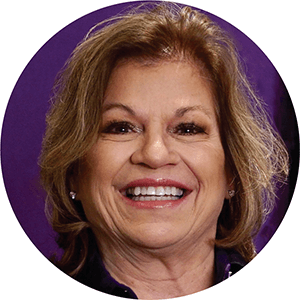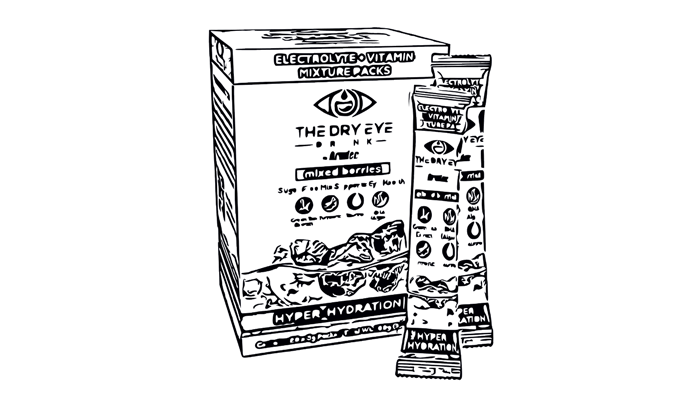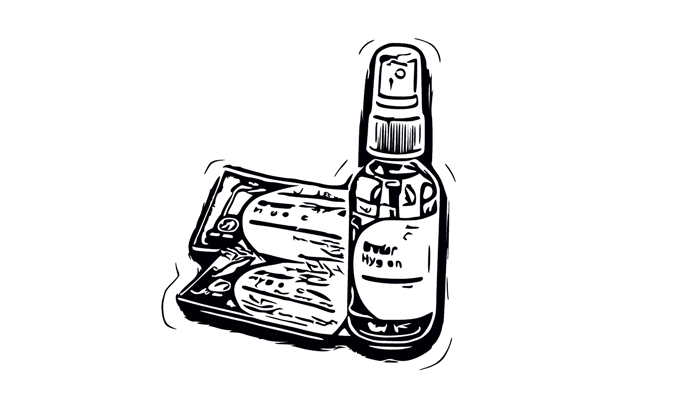
Of all the five senses, vision is the one that patients value most, yet they don’t act accordingly when they neglect their eye health. The result: dry eye and other forms of ocular surface and lid disease continue to diminish quality of life for tens of millions of patients. So, why do patients pay so little attention to something of such personal value and significance? “Part of the answer is that patients don’t know how to do their part when it comes to caring for their eyes and vision,” says Cynthia Matossian, MD, FACS. “Proper hydration and daily lid hygiene is very simple and is recommended for everyone.”
A basic self-care routine for the eyes should be as fundamental as brushing and flossing teeth. Three easy steps – hygiene, heat, hydration – are considered foundational and are useful alone or in combination with other technologies to provide relief to dry eye patients – or prevent signs and symptoms before they emerge. So, why isn’t every eye doctor recommending this approach at every patient visit? Much of the hesitation stems from a common misconception that patients won’t engage in a daily eye care routine, even though research shows the exact opposite – patients would do it, if only their doctors would ask (1).
Empower patients in their hygiene routine
“Research has also shown eyelid wipes as a beneficial tool pre and post cataract surgery,” says P Dee G. Stephenson, MD. Gently wiping a Bruder Hygienic Eyelid Cleansing Wipe across the eyelids and lashes is the optimal first step in a lid hygiene regimen. Bruder Eyelid Cleansing Wipes are easy-to-use and feature a leave-on, no-rinse formula that helps dissolve and remove excessive oils and debris from eyelids and lashes. The premoistened wipes are hypo-allergenic and free of harsh chemicals. Importantly, they don’t sting or burn and are gentle enough for daily use. Wipes with tea tree oil are also available for patients with moderate-to-severe eye irritation, such as those who have Demodex.

“After cleaning with the wipes, it’s advisable for patients to apply one to two sprays of Bruder Hygienic Eyelid Solution to closed eyes to reduce bacterial growth,” says Dr. Stephenson. The spray contains 0.02% pure hypochlorous acid, a commonly used ingredient in lid hygiene sprays because it’s so effective against a wide range of microorganisms. It helps to fight infection, reduce inflammation, control the body’s response to injury, and enhance its natural ability to heal. Hypochlorous acid works to support rapid and effective relief from dry eyes, styes, and red, itchy eyelids associated with conditions like blepharitis and meibomian gland dysfunction (MGD). In contrast to other lid sprays, the Bruder solution contains no preservatives, alcohol, oil, sulfates, parabens or added fragrance.

Empower patients to add moist heat
“Heat therapy has shown significant benefits in improving tear film stability,” says Dr. Matossian. When selecting a mask, it’s worth noting that the Bruder Moist Heat Eye Compress is not like other eye masks, as it features patented MediBeads technology providing the moist, uniform, extended heat required to effectively liquify oil in the meibomian glands and release the eye’s natural hydration. Traditional compresses rely on silica gel beads, gel, or grains that can dry out and deliver uneven heat, causing hot spots that are dangerous and reduce product performance. The Bruder MediBead honeycomb molecular structure encourages complete absorption of water molecules and, when microwaved, releases moist heat in a controlled and consistent manner for eight to 12 minutes.

MediBeads are also infused with silver to repel bacteria and reduce the risk of infection. Importantly, the compress withstands the rigors of daily use and regular washing , and will not break down like inferior materials found in other compresses.
Empower patients to hydrate
Water is a major constituent of the eye (2), so, naturally, hydration is important. Hydration affects the ocular physiology, morphology, ocular pathophysiologic processes, and disease states found in both the front and back of the eye (3). Specifically, whole-body hydration is an important consideration in dry eye etiology and management (4). Unfortunately, average water intake falls far below recommendations. To make adequate hydration easier for patients, Bruder Healthcare has introduced Dry Eye Drink by Bruder. “This hyper-hydration drink was developed by optometrists and ophthalmologists specifically looking to help patients defend against dry eye signs and symptoms,” notes Joshua Davidson, OD, who helped spearhead the development and research of the drink. “It is specially formulated with anti-inflammatory ingredients, vitamins, and electrolytes to nourish and hydrate the eyes and the body,” he adds. By addressing the underlying causes of dry eye disease, the hydration drink helps maintain optimal ocular health, and it does so without sugar and without significant amounts of sodium. In short, proper hydration therapy with Dry Eye Drink treats the eyes from the inside out.

Some of the time beats none of the time
Whether a patient’s eyes are currently uncomfortable or not, empower them to care for their lids and lashes. Indeed, a daily routine with the Bruder system of products is as natural and necessary as facial cleansing and moisturizing, exercising and stretching, or brushing one’s teeth. “Sure, patients sometimes skip flossing or exercising, but falling short occasionally doesn’t diminish the importance of the routine – or how easy it is to pick up again,” says Dr. Matossian.
Bruder products are available for in-office distribution or online referral. Visit www.bruder.com/pro to learn more.
References
- 1. A Hellem et al. Clin Ophthalmol., 16, 1003 (2022).
- 2. J Fischbarg. Mol. Aspects Med., 33, 638 (2012).
- 3. JC Sherwin et al. Clin. Experiment. Ophthalmol., 43, 749 (2015).
- 4. NP Walsh et al. Investig. Ophthalmol. Vis. Sci., 53, 6622 (2012).
